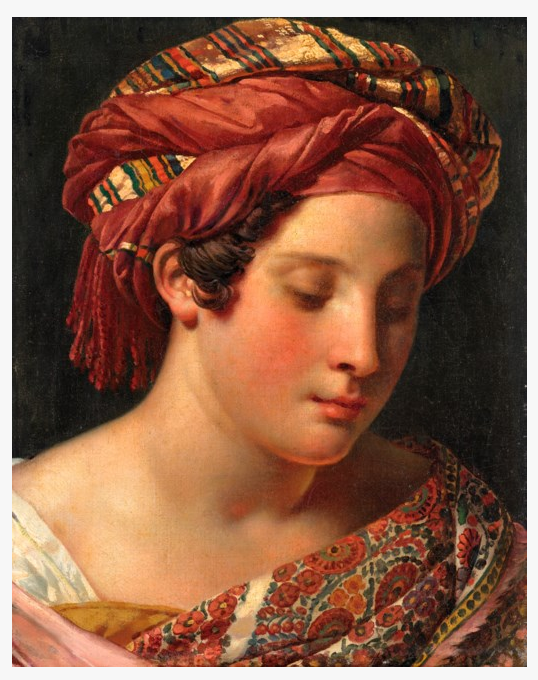Chardin, Ingres, Taddeo, Corot: The Most Beautiful Parisian Lots of June
[2024年06月11日]This June in Paris, Christie’s and Sotheby’s are organizing sales covering six centuries of European art history. Among the highlight pieces to discover or acquire this week are the masterpiece by Jean Siméon Chardin, Le Melon entamé, from the Marcille and Rothschild collections, and a rediscovered Odalisque by Anne-Louis Girodet Trioson, appearing on the market for the first time at Christie’s. At Sotheby’s, a significant rediscovery involves the eminent Quattrocento artist, Taddeo di Bartolo, and a rare opportunity arises to acquire a superb religious diptych from the workshop of Albrecht Bouts.

Jean-Baptiste Siméon CHARDIN (1699-1779)
Le Melon entamé. Christie’s. Estimate: $8.7m – $13m
This masterpiece by Chardin originally came from the collection of Jacques Roëttiers de La Tour, who was the king’s goldsmith from 1761 until his death in 1784. It entered the collection of Baroness Charlotte de Rothschild at the end of the 19th century and has remained with the Rothschild family ever since, maintaining an uninterrupted provenance since its creation.
The description in Christie’s catalog describes this work as “Still in a nearly perfect state of preservation (…). Large in size, monumental in design, elegantly poised yet dynamic in composition, richly colored and executed in dazzling layers of powdery glazing, striking in its mellow and enveloping qualities of light and atmosphere, The Cut Melon displays every facet of Chardin’s virtuoso genius in the final and most accomplished phase of his creative maturity.”
In addition to its plastic virtuosity and prestigious provenance, another asset for attracting international buyers is the painting’s Cultural Property Passport (CBC), meaning it is free to leave French territory for any major museum or private collection worldwide.

Anne-Louis GIRODET (1767-1824)
L’Odalisque. Christie’s. Estimate: $80,000 – $120,000
Girodet, a student of the great David (1748-1825), who took him into his studio in 1785, developed an audacious and sensual plastic language. This timeless beauty, adorned with a turban, is a very rare subject in the auction market. The painting, directly from a gift by the artist to the ancestors of the current owners, is being offered for sale for the first time since its creation. Its modest size (40.3 x 32.7 cm) makes it an affordable masterpiece around $100,000, while the finest large female portraits exceed $200,000, reaching up to $400,000.

Taddeo DI BARTOLO (1362/63-1422)
Saints John the Baptist, Louis of Toulouse, and Paul. Sotheby’s. Estimate: $130,000 – $195,000
The Sotheby’s sale will begin on June 19 with an important triptych by Taddeo di Bartolo, dated to the first decade of the Quattrocento, expected to fetch between $130,000 and $200,000. This great artist painted the largest polyptychs of the era, such as the majestic triptych for the Collegiata di Montepulciano and the unique double-sided heptaptych for San Francesco al Prato in Perugia (1403). Unseen for at least a century, these panels represent a particularly remarkable rediscovery, notes Sotheby’s.

The Mourning Virgin; Christ Crowned with Thorns. Sotheby’s. Estimate: $217,000 – $326,000
A Christ crowned with thorns against a gold background paired with a Virgin of Sorrows: this set, first created in the 1450s by Albrecht’s father, Dirk Bouts, was so successful that it was reproduced multiple times in the master’s workshop and later in his son’s. A high-quality version of these two panels, attributed to Dirk Bouts’ workshop, is housed in the National Gallery in London. The other known versions of this diptych are considered to be the work of his son Albrecht and his workshop.
A diptych in such good condition is a rare acquisition opportunity. According to Sotheby’s, they “are among the best and most accomplished examples among those currently listed, the most eminent examples of which are today preserved for the most part in the largest international museum institutions, from the Louvre to the Ottawa Museum , from the Museum of Western Art in Tokyo to the Metropolitan Museum in New York.
The two paintings were part of the famous collection of the Duchess of Berry, inherited from her husband, Prince Lucchesi-Palli. They were sold—under the name of Dürer—during the dispersal of their Venetian palace’s artworks in 1865. Their journey and various attributions can then be traced through two important 19th-century collections, those of Jean-Baptiste Auguiot, an administrator at the Louvre, and Jean Dollfus, with their attributions evolving each time.




 30.6
30.6
